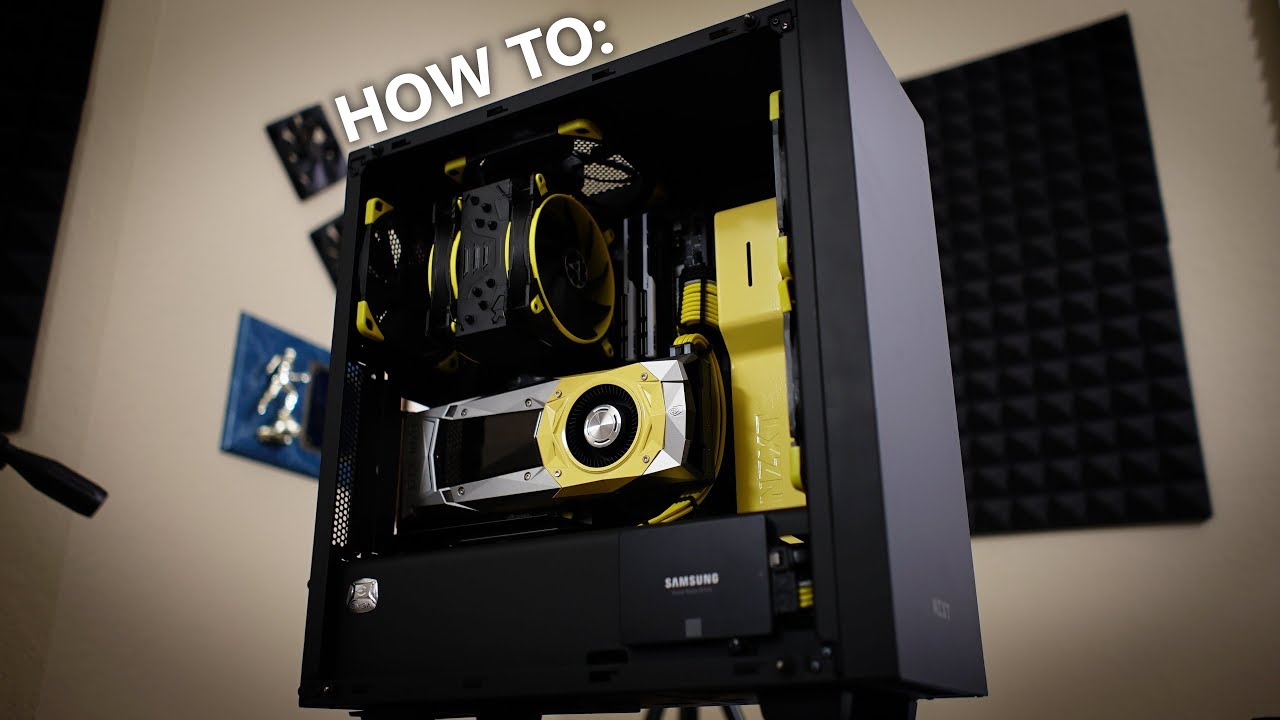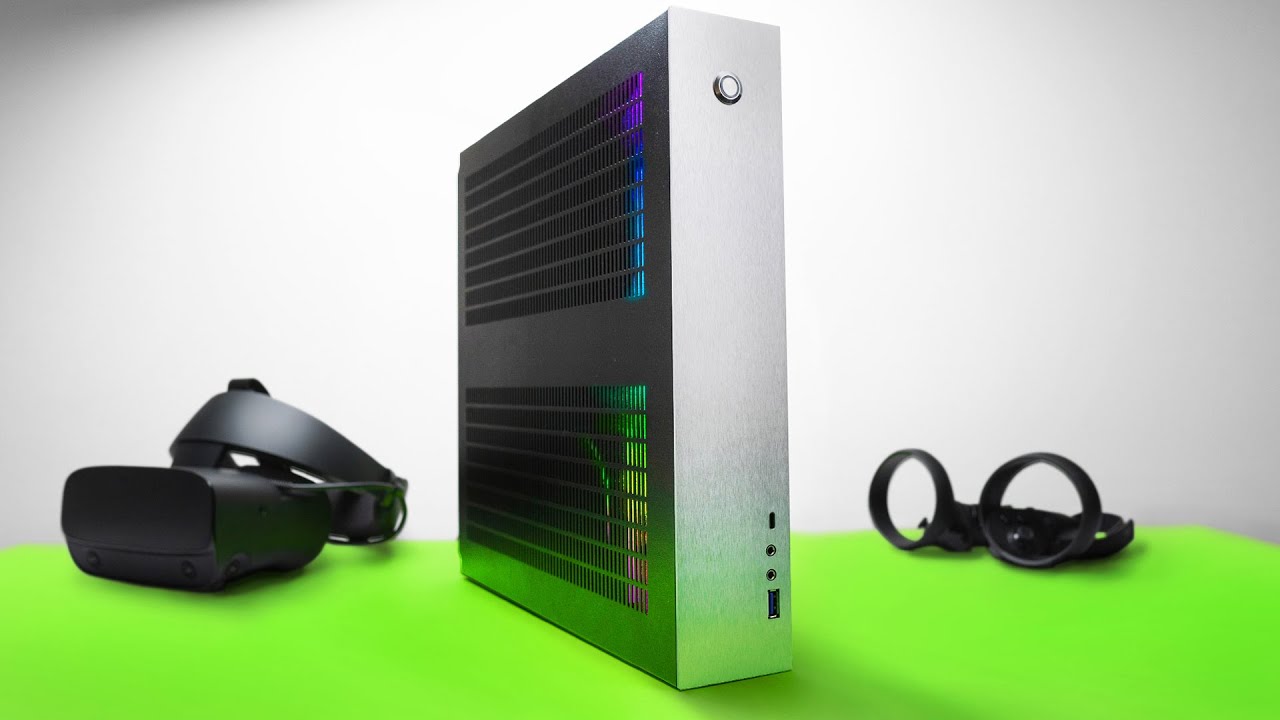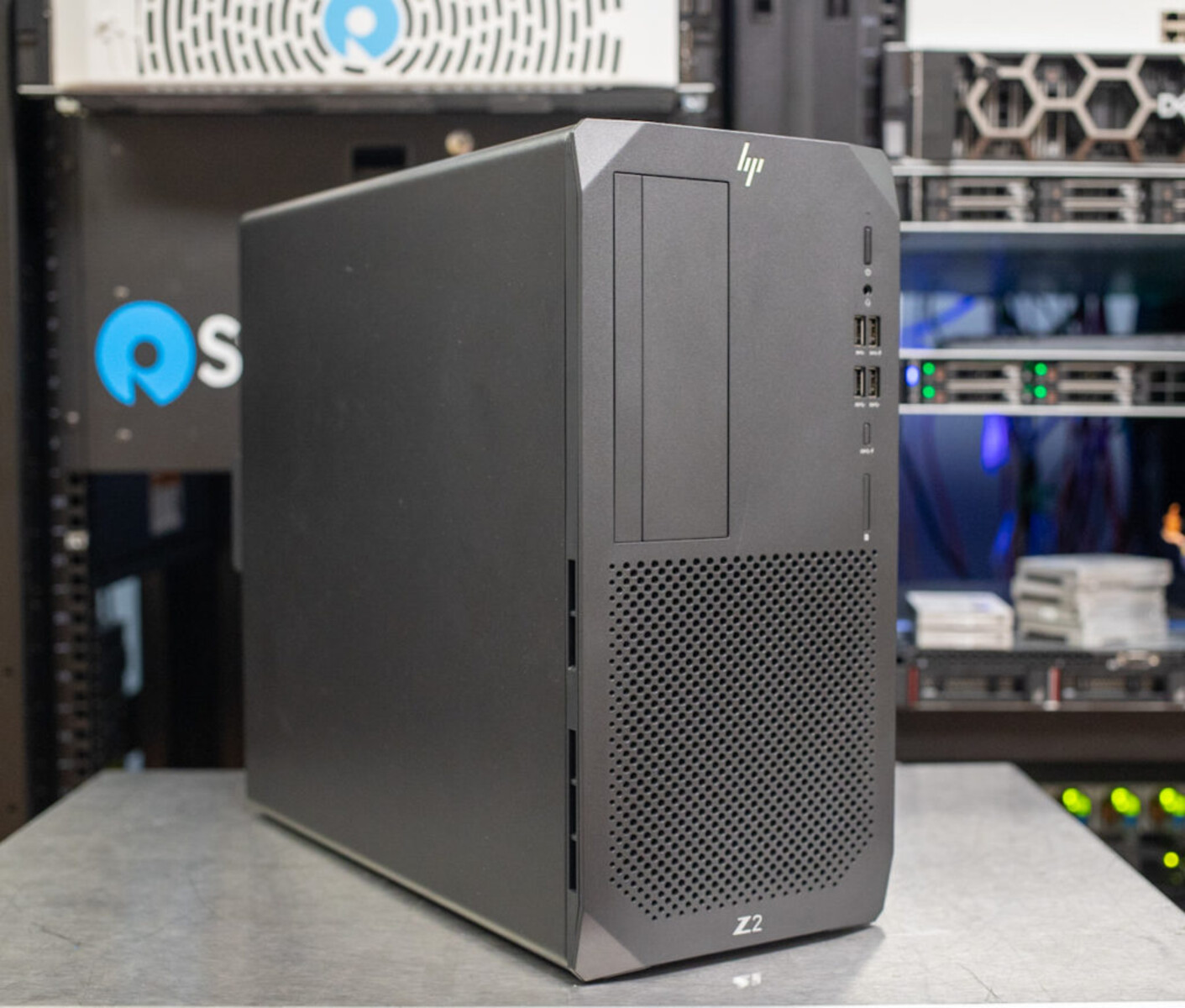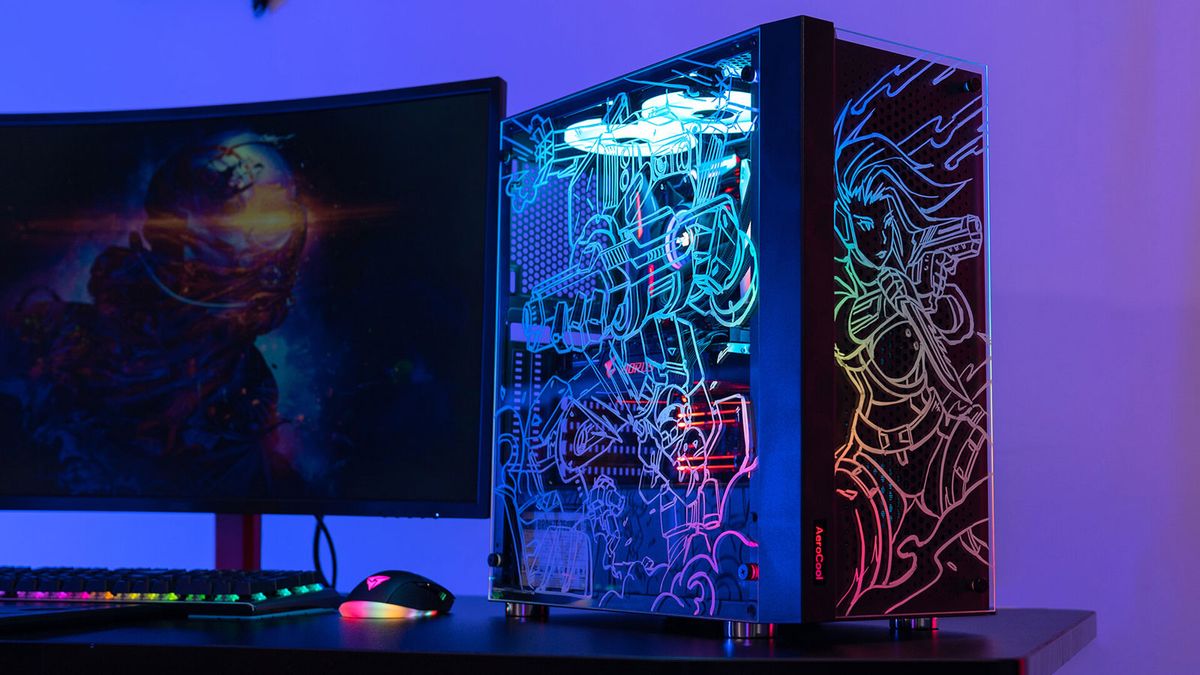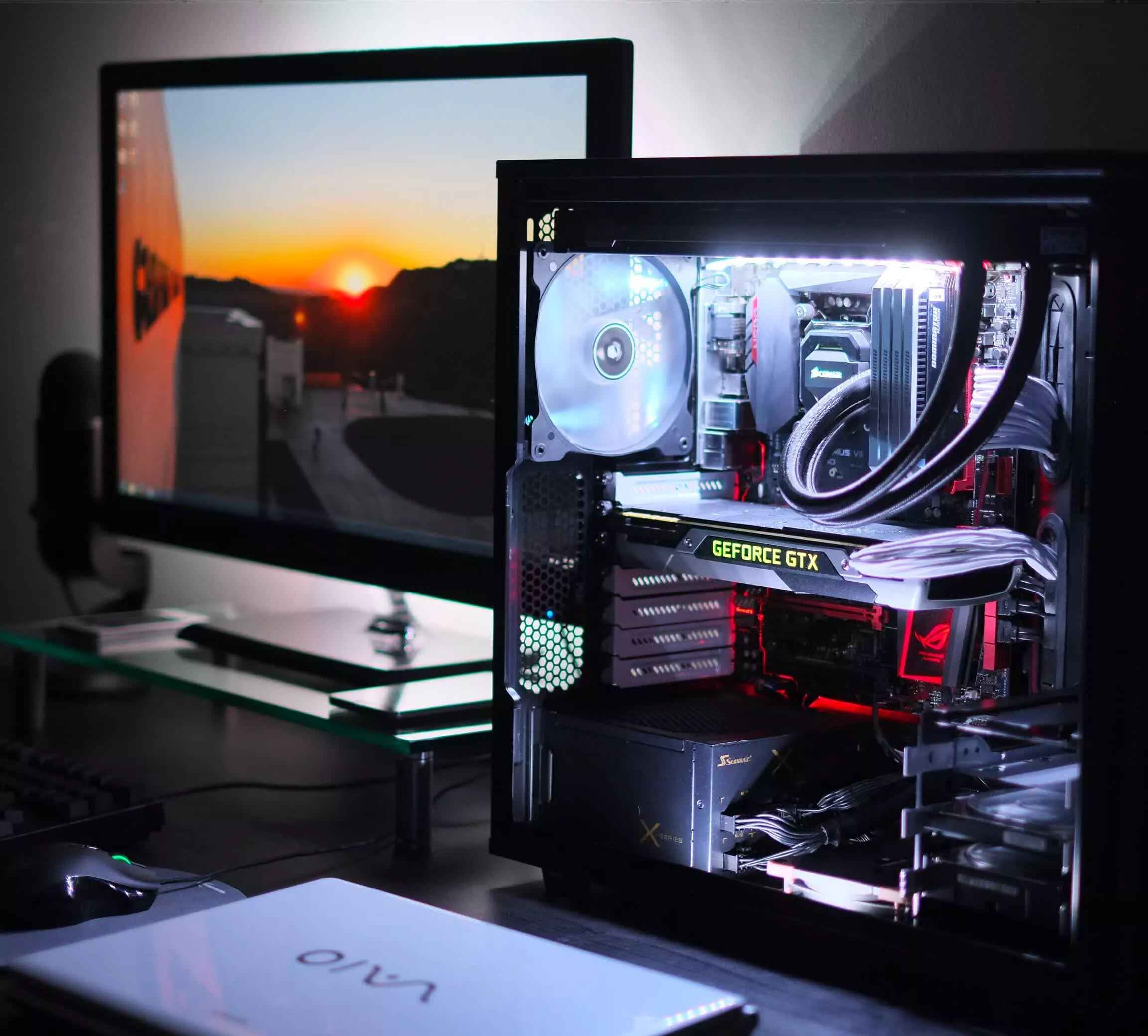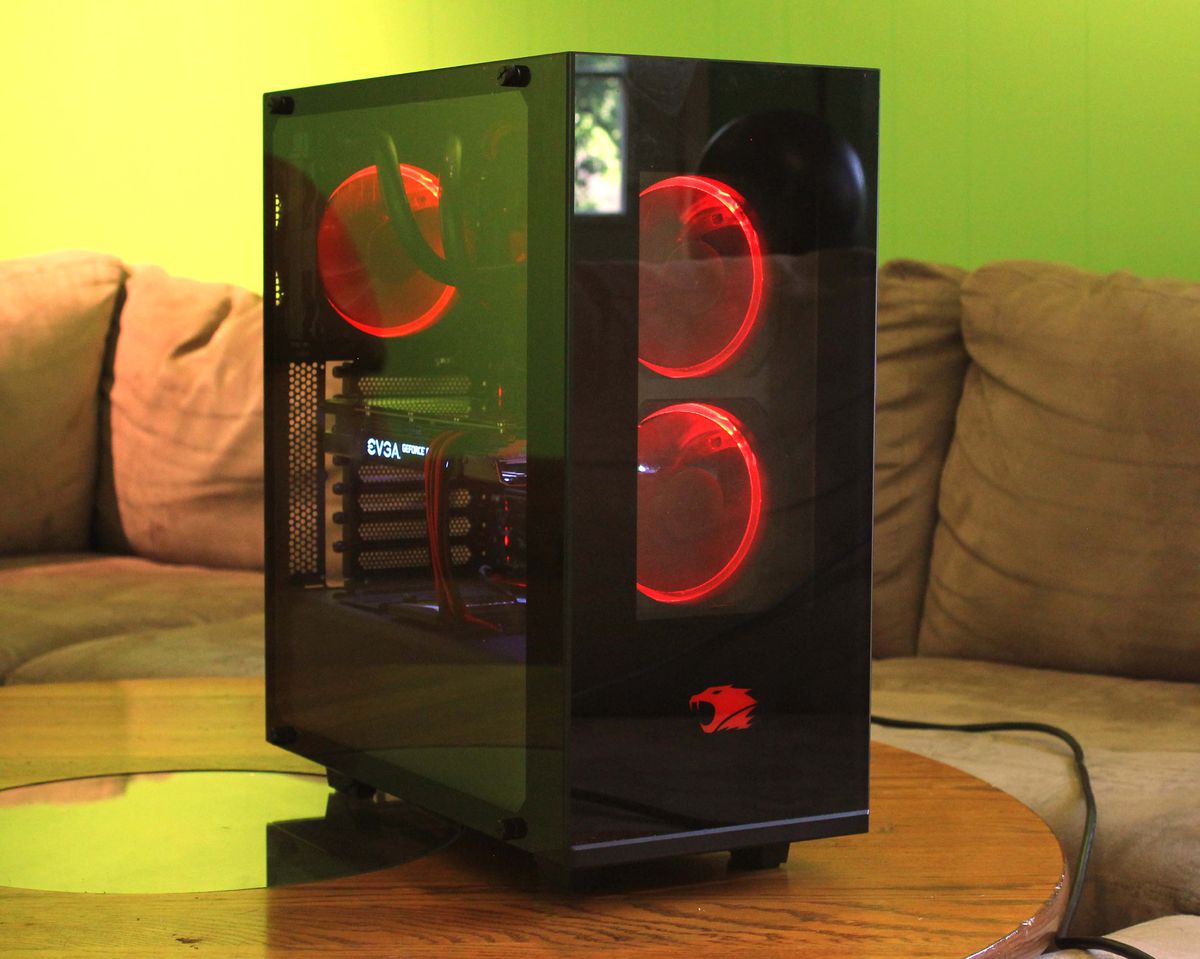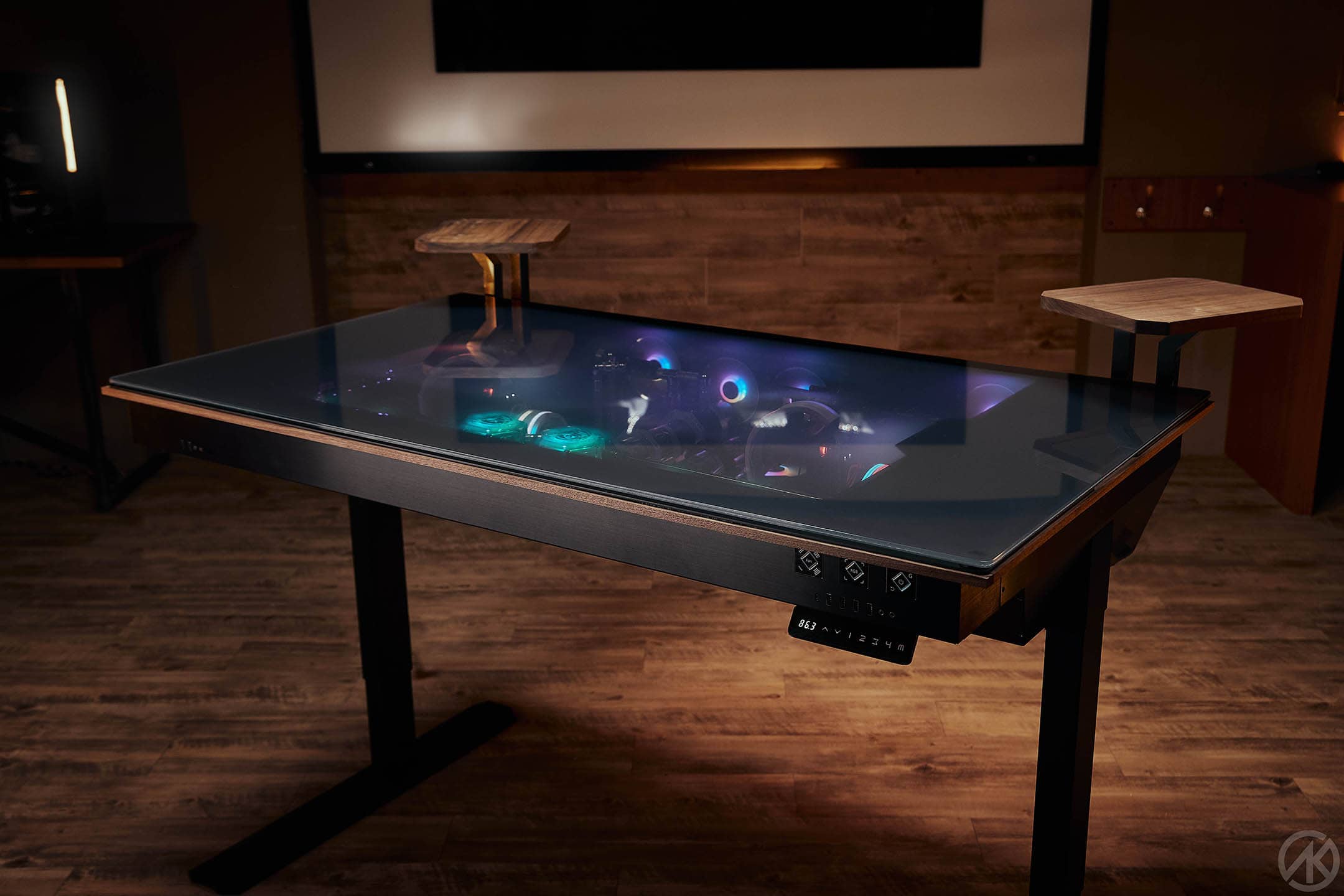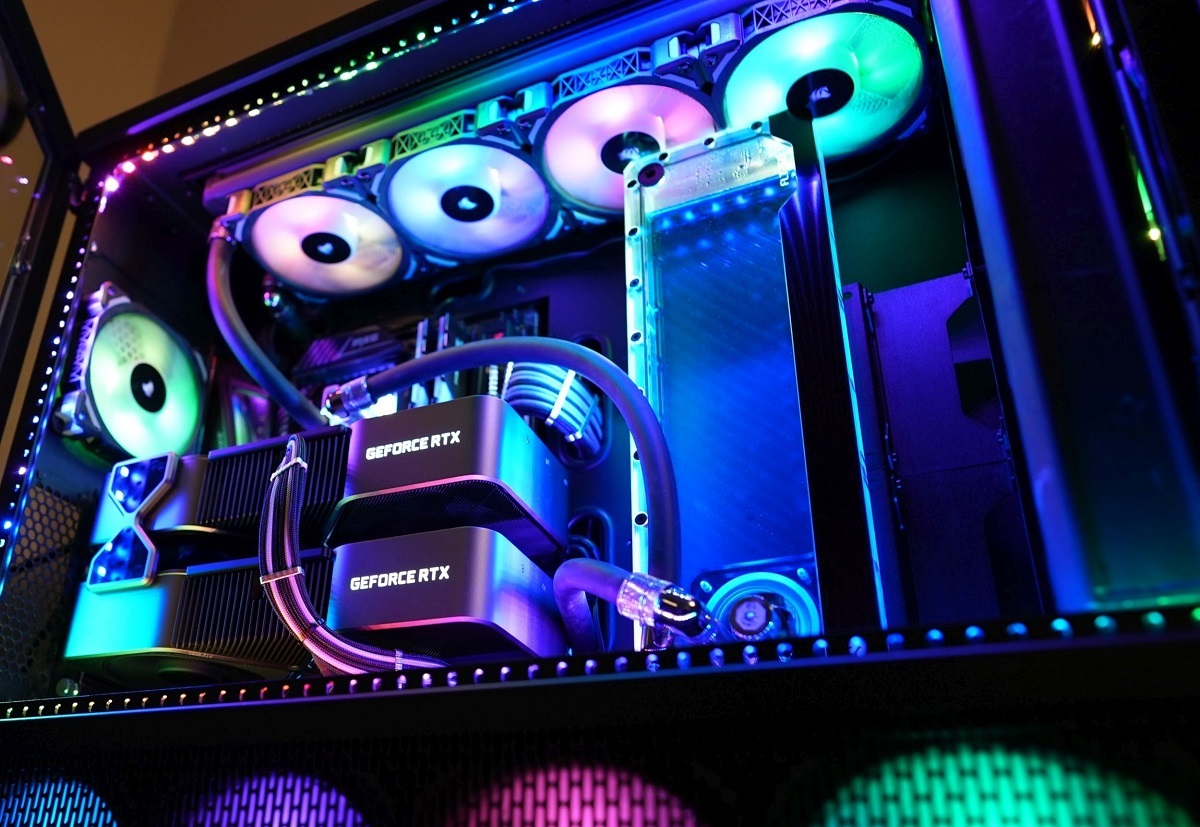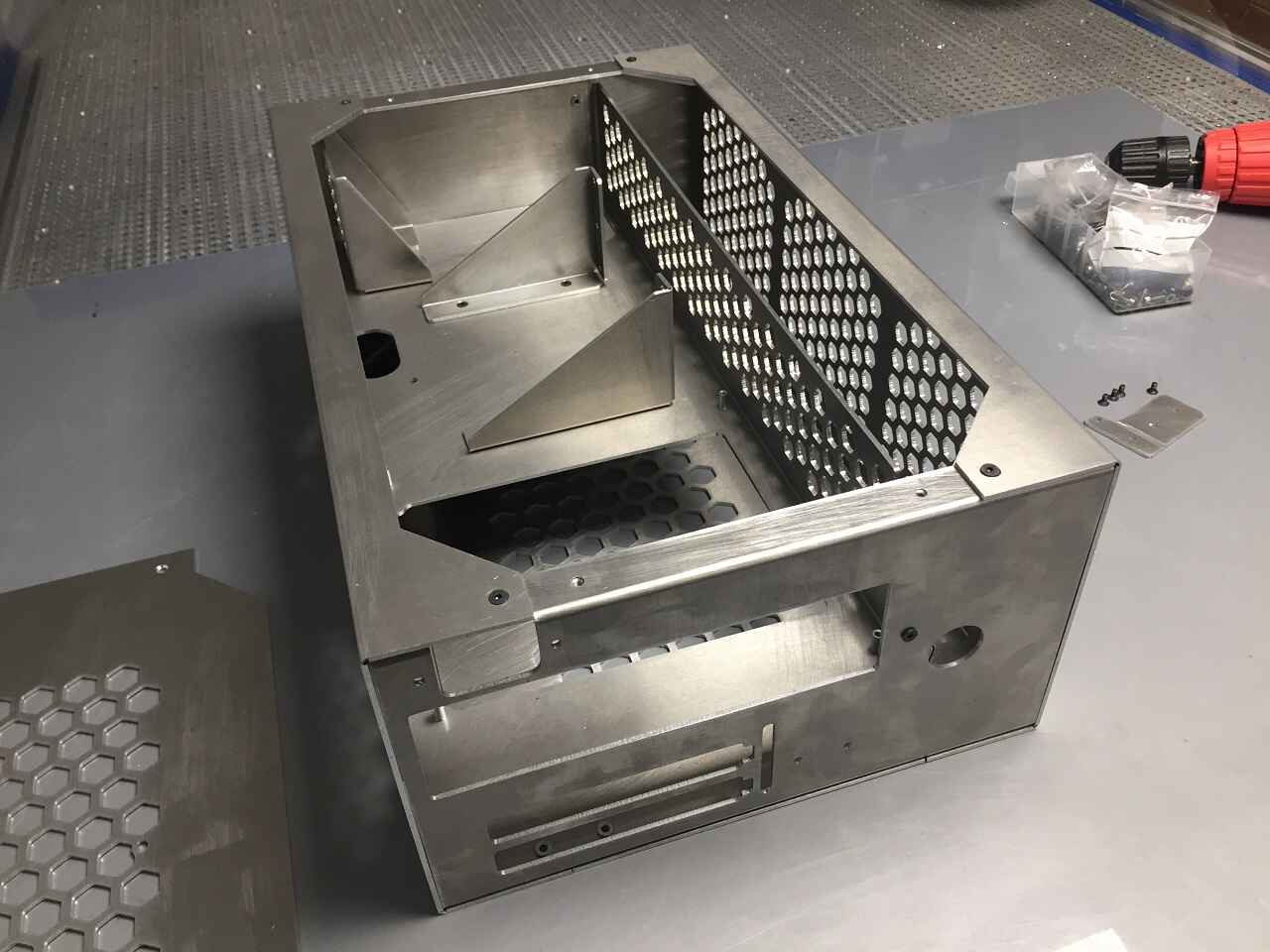Introduction
Customizing your PC case is a fantastic way to add a personal touch to your computer setup. Whether you’re an avid gamer, a creative professional, or simply someone who appreciates unique aesthetics, customizing your PC case can transform it from a basic box into a work of art. From painting and adding decals to installing LED lights and upgrading cooling systems, there are countless options to make your PC case truly stand out.
With a customized PC case, you can showcase your personality and style while also improving the overall look and feel of your computer setup. Additionally, customizing your PC case allows you to tailor it to your specific needs, making it easier to manage cables, improve airflow, and incorporate additional functionality.
In this article, we will explore various ways to customize your PC case. From beginner-friendly options to more advanced modifications, there’s something for everyone. So, let’s dive in and uncover all the possibilities to make your PC case uniquely yours.
Choosing the Right PC Case
When it comes to customizing your PC case, the first step is choosing the right case that suits your needs and preferences. With so many options available in the market, it’s important to consider several factors before making your decision.
The first aspect to consider is the size of the PC case. Depending on your requirements, you can choose from compact mini-ITX cases to large full tower cases. Consider the size of your components, such as the motherboard, graphics card, and cooling system, and ensure that the case can accommodate them comfortably.
Next, think about the airflow and cooling capabilities of the case. Look for cases with ample ventilation options, such as multiple fan mounts or liquid cooling support, to keep your components running efficiently and prevent overheating.
Another important consideration is the cable management features of the case. Look for cases with plenty of cable routing holes, Velcro straps, or cable management compartments to make it easier to organize and hide your cables neatly. This not only improves the aesthetics but also enhances airflow and makes future upgrades or maintenance a breeze.
Additionally, consider the overall design and style of the case. Do you prefer a sleek and minimalist look, or do you want something more flashy and eye-catching? Take into account the material of the case, such as tempered glass or aluminum, and choose a design that aligns with your personal taste and the overall theme of your setup.
Lastly, don’t forget to check for any extra features that may enhance your user experience, such as easily accessible front ports, tool-less drive bays, or removable dust filters.
By carefully considering these factors, you can ensure that you select a PC case that not only provides the required functionality but also serves as a solid foundation for your customization efforts.
Preparing Your PC Case for Customization
Before diving into the exciting world of customizing your PC case, it’s essential to properly prepare the case to ensure a smooth and successful customization process. Here are some key steps to follow:
1. Disassemble the Case: Start by carefully disassembling your PC case. Remove any panels, side covers, and other removable components. This will provide you with easier access to different parts of the case for customization.
2. Clean the Case: Give your PC case a thorough cleaning to remove any dust or dirt. Use compressed air or a soft brush to clean the nooks and crannies of the case. Ensure that all surfaces are clean and free from debris, as this will help achieve a smooth and professional-looking customization.
3. Sand Down the Surfaces: If you plan to paint or modify the surface of your PC case, it’s important to sand down the surfaces to create a smooth foundation. Use fine-grit sandpaper to gently sand the surfaces, removing any imperfections or roughness. Be careful not to apply too much pressure, as you don’t want to damage the case.
4. Mask Off Areas: If there are particular areas of the case that you don’t want to paint or modify, use painter’s tape or masking tape to protect those areas. This will ensure clean lines and prevent any accidental paint or modification on unwanted sections.
5. Prime the Surfaces: Before painting or applying any modifications, it’s recommended to apply a primer to the surfaces of the case. This will help the paint adhere better and provide a more durable and long-lasting finish. Follow the instructions on the primer can and allow it to dry completely.
6. Plan Your Customization: Take some time to plan the specific customization you want to apply to your PC case. This could include painting, adding a custom logo, installing LED lights, or any other modifications. Having a clear plan in mind will help you execute the customization smoothly and achieve the desired results.
By following these preparatory steps, you ensure that your PC case is ready for customization. Proper preparation is key to a successful outcome, giving you the best foundation for your creative endeavors.
Painting Your PC Case
One of the most popular and visually impactful ways to customize your PC case is by giving it a fresh coat of paint. Painting your PC case allows you to completely transform its appearance, giving it a unique and personalized touch. Here’s how you can paint your PC case:
1. Prepare the Surface: Before painting, make sure to properly prepare the surface of your PC case. This involves cleaning it thoroughly and sanding down any rough areas. Remove any removable components, such as panels or side covers, to ensure even coverage.
2. Choose Paint: Select high-quality paint suitable for your PC case’s material. Acrylic or enamel paint is commonly used for this purpose. Choose a color or combination of colors that align with your desired aesthetic and personal preferences.
3. Apply Primer: Applying a primer is crucial as it helps the paint adhere better to the surface and enhances the durability of the finish. Use a suitable primer specifically designed for the material of your PC case. Apply it evenly and let it dry according to the manufacturer’s instructions.
4. Paint Layers: Apply several thin coats of paint, allowing each coat to dry completely before applying the next one. This will help achieve a smooth and even finish. Use a paint sprayer or a high-quality brush for best results, ensuring that the paint is applied evenly and without visible brush strokes.
5. Optional Techniques: If you want to add some creative flair, consider using techniques such as color fading, gradient effects, or stenciling. These techniques can add depth and complexity to your painted PC case.
6. Apply Clear Coat: Once the paint has dried completely, apply a clear coat to protect the paint and give it a glossy finish. The clear coat acts as a protective layer against scratches and adds a professional touch to your customization.
7. Allow Proper Drying Time: Finally, allow sufficient drying time for both the paint and the clear coat. Follow the manufacturer’s instructions for drying times to ensure a fully cured and durable finish.
Painting your PC case is a fun and creative way to make it uniquely yours. Whether you opt for a bold and vibrant color or a sleek and minimalist design, a fresh coat of paint can completely elevate the appearance of your PC case and turn it into a true masterpiece.
Adding Custom Logo or Design
Another fantastic way to personalize your PC case is by adding a custom logo or design. Whether you want to showcase your favorite gaming logo, your own branding, or a unique design that reflects your interests, adding a custom logo or design can make your PC case truly one-of-a-kind. Here are some steps to help you with this customization:
1. Design or Source a Logo: Start by designing or sourcing a logo or design that you want to add to your PC case. You can use graphic design software to create your own logo or hire a designer to bring your ideas to life. Alternatively, you can find pre-made logos or designs online that align with your vision.
2. Print or Cut the Design: Once you have your logo or design ready, you can print it on high-quality vinyl or sticker paper if it’s a simple design. If your design is more intricate or requires precise cutting, consider using a vinyl cutter or a laser cutter to cut out the design accurately.
3. Prepare the Surface: Before applying the logo or design, clean the surface of your PC case to ensure it’s free from dust and debris. If the case has a glossy finish, lightly sanding it can help the adhesive bond better with the surface.
4. Apply the Logo or Design: Peel off the backing of the vinyl or sticker and carefully apply the logo or design to the desired location on your PC case. Use a squeegee or a credit card to remove any air bubbles and ensure a smooth application. If you’re using a vinyl cutter, follow the instructions provided with the cutter for the best application process.
5. Optional: Clear Coat or Sealant: For added protection and longevity, consider applying a clear coat or sealant over the applied logo or design. This will help prevent peeling or fading over time, ensuring that your custom logo or design stays looking fresh for longer.
6. Placement and Alignment: Take your time to position the logo or design exactly where you want it on your PC case. Consider the overall aesthetics and balance with other elements in your setup. You can also experiment with different placements or orientations until you find the perfect arrangement.
Adding a custom logo or design to your PC case allows you to showcase your individuality and make a statement with your setup. Whether it’s a personal brand logo or a favorite artwork, this customization option adds a distinctive touch that sets your PC case apart from the rest.
Installing LED Lights
Adding LED lights to your PC case is an excellent way to enhance its visual appeal and create a captivating ambiance. LED lights can be installed inside the case to illuminate the internals or placed on the exterior to showcase the case’s design. Here’s how you can install LED lights in your PC case:
1. Determine the Lighting Style: Decide on the lighting style you want to achieve. You can choose from a wide range of options, such as single-color lighting, RGB lighting with customizable colors, or even addressable RGB lights that allow for individually controlled LEDs.
2. Plan the LED Placement: Determine where you want to place the LED lights inside or outside your PC case. Popular spots include along the edges, behind the motherboard tray, or accentuating specific components like the graphics card or CPU cooler. Ensure that the LED strips or lights will be easily visible and won’t interfere with other components.
3. Choose the LED Type: Select the appropriate type of LED lights for your intended design. Options include LED strips, LED fans, or individual LED modules. Consider the length, brightness, and connectivity options when making your choice.
4. Connect the LEDs: Follow the manufacturer’s instructions to connect the LED lights to the designated power source. Most LED lights use Molex or SATA connectors, while newer ones may utilize RGB headers on the motherboard for synchronization.
5. Secure the LED Strips: If you’re using LED strips, use the adhesive backing to securely attach them to the desired surfaces inside or outside the PC case. Make sure the strips are straight and evenly spaced for a uniform lighting effect.
6. Route and Hide Cables: Properly route and hide the LED cables to maintain a clean and organized appearance. Use cable management features such as Velcro straps, cable routing holes, or cable channels to keep the LED cables concealed and prevent them from blocking airflow or interfering with other components.
7. Adjust the Lighting: Once installed, adjust the lighting effects and colors according to your preferences. Some LED lights come with included software or a remote control that allows you to customize the lighting patterns, brightness levels, and synchronization with other RGB components.
Installing LED lights in your PC case can elevate its aesthetics and create a mesmerizing visual experience. With a bit of planning and creativity, you can transform your PC case into a captivating centerpiece that beautifully illuminates your setup.
Custom Cable Management
Proper cable management not only improves the aesthetics of your PC case but also enhances airflow and makes troubleshooting or upgrading easier. Custom cable management allows you to organize and hide cables neatly, giving your setup a clean and professional look. Here are some tips for achieving effective cable management:
1. Plan Ahead: Before assembling your PC components, plan the cable routing paths to minimize cable clutter and maximize airflow. Consider the length of cables, the locations of connectors on the motherboard, and the positioning of components.
2. Use Cable Ties or Velcro Straps: Secure and bundle cables together using cable ties or Velcro straps. This helps prevent cables from tangling or obstructing airflow. Additionally, it makes it easier to manage and route cables neatly behind the motherboard tray or in designated cable management compartments.
3. Route Cables Behind the Motherboard Tray: Take advantage of the space behind the motherboard tray to route cables. Most modern PC cases have ample space for cable management, making it easier to hide cables out of sight. Use cable routing holes or grommets to guide cables and keep them organized.
4. Utilize Cable Management Accessories: Invest in cable management accessories such as cable combs, clips, or adhesive cable holders. These accessories help keep cables in place, prevent them from sagging, and ensure a clean and organized appearance.
5. Label Cables: Labeling cables can be a game-changer when it comes to troubleshooting or making changes to your setup. Use cable tags or adhesive labels to identify each cable, making it easier to identify and manage cables when needed.
6. Consider Custom Cables: Custom cables provide a sleek and tailored look to your cable management. You can opt for custom-length cables that precisely fit your setup or select a specific color scheme to match your overall design. Custom cables are available for various components such as the PSU, GPU, and motherboard cables.
7. Regular Maintenance: Periodically check for cable management issues and make adjustments if necessary. Over time, cables may become loose or tangled, impacting the overall organization. Regular maintenance ensures that your cable management remains efficient and visually appealing.
Custom cable management is a worthwhile investment that not only enhances the aesthetics of your PC case but also contributes to better airflow and easier maintenance. With careful planning and the right tools, you can achieve a clean and well-organized cable management system that elevates the overall appearance of your PC setup.
Personalizing Your PC Case with Decals or Stickers
Adding decals or stickers to your PC case is a creative and cost-effective way to personalize your setup and showcase your personality. With a wide variety of designs and options available, you can easily find decals that match your interests, favorite games, or unique style. Here’s how you can personalize your PC case with decals or stickers:
1. Choose or Design Your Decals: Look for decals or stickers that resonate with your preferences. Many online retailers offer a vast range of designs, from gaming and pop culture themes to abstract patterns or custom designs. Alternatively, you can create your own decals using graphic design software or commission a designer to bring your ideas to life.
2. Clean and Prepare the Surface: Before applying the decals, ensure that the surface of your PC case is clean and free of dust and debris. Use a gentle cleaner or rubbing alcohol to wipe the surface, allowing for better adhesion and a smooth finish.
3. Placement and Alignment: Consider the placement and alignment of the decals on your PC case. You can choose to cover a specific area, such as the side panel or front panel, or scatter smaller decals across different parts of the case. Take your time to experiment with different arrangements before finalizing the placement.
4. Peel and Stick: Carefully peel the backing off the decal without touching the adhesive side. Slowly and steadily apply the decal to the desired location on your PC case, ensuring it’s aligned correctly. Use a credit card or a soft, clean cloth to press down the decal, removing any air bubbles and ensuring a smooth application.
5. Layering and Overlapping: If you’re using multiple decals, you can get creative by layering or overlapping them for a more dynamic and personalized look. Experiment with different combinations to achieve the desired effect while maintaining a balanced and cohesive design.
6. Seal and Protect: To prolong the lifespan of the decals and protect them from wear and tear, consider applying a clear sealant or varnish over the decals. This provides an additional layer of protection and helps prevent the decals from peeling or fading over time.
7. Flexibility and Removal: One of the advantages of decals and stickers is their flexibility and ease of removal. If you ever want to change the design or remove the decals, they can be peeled off without causing any damage to the PC case. However, ensure that you follow proper removal techniques to avoid any residue or adhesive remains.
Personalizing your PC case with decals or stickers allows you to express your individuality and create a unique visual impact. Whether you opt for bold and eye-catching designs or subtle and minimalist decals, this customization option adds a personal touch that sets your PC case apart from the rest.
Modifying the Cooling System
Modifying the cooling system of your PC case is a crucial step in ensuring optimal performance and longevity of your components. By implementing effective cooling solutions, you can prevent overheating and improve overall system stability. Here are some ways to modify the cooling system of your PC case:
1. Upgrade Fans: Consider upgrading the stock fans that come with your PC case to high-performance fans. Look for fans with larger blade sizes, higher airflow rates, and low noise levels. Properly position the fans for optimal airflow, ensuring that they intake cool air and exhaust hot air efficiently.
2. Install Liquid Cooling: Liquid cooling, also known as water cooling, is a popular alternative to traditional air cooling. It offers improved cooling performance, quieter operation, and a sleeker aesthetic. You can opt for an all-in-one (AIO) cooler or custom loops depending on your budget and cooling requirements.
3. Upgrade CPU Cooler: If you’re using a stock CPU cooler, consider upgrading to a more efficient aftermarket cooler. These coolers typically feature larger heatsinks and better fan configurations, allowing for improved heat dissipation and thermal management.
4. Improve Airflow: Ensure proper airflow by organizing cables properly, removing any obstructions in the case, and installing additional case fans if needed. Adequate airflow prevents the build-up of hot air and helps maintain lower temperatures throughout your system.
5. Monitor and Adjust Fan Speeds: Use fan control software or hardware solutions to monitor and adjust fan speeds based on system temperature. This ensures that fans operate at optimal speeds and reduces noise levels when the system is not under heavy load.
6. Consider Fan Filters: Dust can accumulate inside your PC case, affecting airflow and causing overheating. Install fan filters to prevent dust buildup on the intake fans. Regularly clean or replace these filters to maintain optimal airflow and prevent dust from clogging the system.
7. Cable Management for Airflow: Proper cable management not only improves aesthetics but also promotes better airflow. Organize and route cables away from fans and components to allow for unrestricted airflow. Use cable ties, Velcro straps, or cable management solutions to keep cables neatly secured and out of the way.
Modifying the cooling system of your PC case is essential for maintaining optimal system temperatures and preventing thermal throttling. By investing in better cooling solutions, you can ensure the longevity and performance of your components, allowing your system to operate smoothly even during intensive tasks or gaming sessions.
Upgrading Your PC Case with Window Panels
One of the most visually striking upgrades you can make to your PC case is the addition of window panels. Window panels allow you to showcase the internal components of your computer, turning it into a visually appealing centerpiece. Here’s how you can upgrade your PC case with window panels:
1. Choose the Right Window Panel: Select a window panel that fits your PC case perfectly. Measure the dimensions of your case and look for window panels specifically designed for your make and model, ensuring a seamless fit.
2. Remove Side Panel: Carefully remove the existing side panel of your PC case. This may involve unscrewing the panel or releasing latches, depending on the case design. Ensure you keep any screws or attachments secure to avoid losing them.
3. Prepare the Window Panel: If the window panel doesn’t come pre-installed, you may need to prepare it by removing any protective film or covering. Clean the window panel to ensure clarity and remove any fingerprints or smudges.
4. Install the Window Panel: Align the window panel with the side of your PC case, ensuring that any screw holes or attachment points match. Carefully secure the window panel in place, ensuring it is properly seated on the case.
5. Cable Management: With the window panel installed, it’s essential to pay attention to cable management. Neatly route and secure cables behind the motherboard tray or in designated cable management areas to ensure they don’t obstruct the view through the window panel.
6. Showcase Lighting: If you have installed LED lighting or have RGB components, the window panel allows you to showcase the lighting effects. Experiment with different lighting setups and colors to create an impressive visual experience through the window panel.
7. Maintenance and Cleaning: Regularly clean the window panel to keep it free from dust, fingerprints, or smudges. Use a microfiber cloth or a gentle glass cleaner for best results. This ensures that your internal components are visible through a clear and pristine window panel.
Upgrading your PC case with window panels adds a touch of sophistication and showcases the inner workings of your computer. Whether you’re an enthusiast proud of your meticulously built system or simply want to add a visually appealing element to your setup, window panels are sure to make a lasting impression.
Conclusion
Customizing your PC case offers a world of possibilities to make your computer setup truly unique and tailored to your preferences. Whether you’re a gamer, a creative professional, or simply someone who values aesthetics, there are numerous ways to personalize your PC case and create a visually stunning setup. From painting and adding logos to installing LED lights and modifying the cooling system, each customization option allows you to express your individuality and showcase your style.
When embarking on the journey of customizing your PC case, it’s essential to choose the right case that suits your needs and provides the necessary functionality. Properly preparing the case, whether it’s cleaning, sanding, or priming, sets the foundation for a successful customization process. From there, you can explore various options such as painting, adding custom logos or designs, installing LED lights, and managing cables to create a clean and organized interior.
Upgrading the cooling system ensures that your components stay cool, promoting optimal performance and longevity. Additionally, window panels offer a captivating way to showcase your internals and add a touch of elegance to your PC case. By following these customization steps, you can transform your PC case into a work of art that reflects your personality and style.
Remember, the key to successful customization is finding a balance between functionality and aesthetics. While creating a visually appealing PC case, ensure that it also meets your practical needs. Lastly, don’t be afraid to experiment, unleash your creativity, and have fun throughout the customization process. The end result will be a PC case that is uniquely yours and a source of pride every time you look at it.







